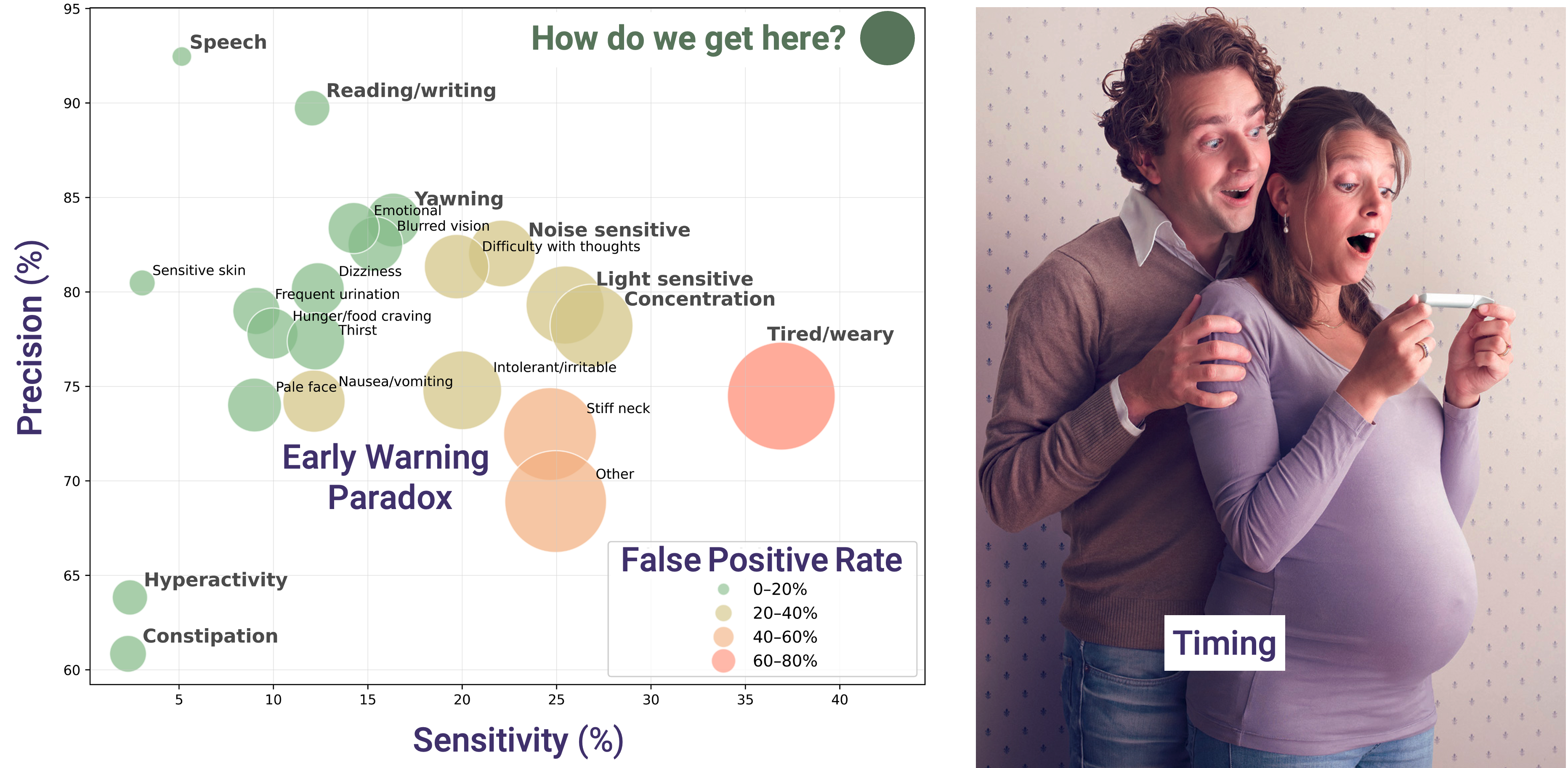3. Challenge

Avoid a High False-Positive Rate
Precision (2. challenge) and false-positive rate sound similar, but they measure different things.
Precision asks: Of all the times the signal said “a migraine is coming,” how many times was it actually right? It looks only at the yes-signals.
False-positive rate asks: Of all the times there was no migraine, how often did the signal still say “a migraine is coming”? It looks only at the no-migraine days.
This difference matters. Every false alarm can lead to unnecessary action — taking medication you didn’t need, changing plans, or feeling constant anxiety. Over time, that creates treatment fatigue and side effects with no benefit. That’s why keeping the false-positive rate low is so important, even when precision seems high.
Like with precision, we’re working on algorithms to improve this balance. But we’re not there yet. If you understand the difference between precision and false-positive rate, you’re already one step ahead. Avoid signs with a high false-positive rate — even if they seem tempting because of their high sensitivity.